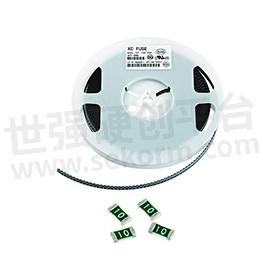Selection of Fuses in Small Home Appliance PCB Board




The Fuses commonly used in PCB boards of small household appliances use self-recovery fuses to protect the circuit. The selection of self-recovery fuses in small household appliances can be divided into the following steps:
Firstly, determine the working voltage of the self-recovery fuse;
2. Based on the actual average operation of different products, determine whether the self-recovery fuse is the inactive current;
3. The maximum current ratio, temperature, and other parameters of household small appliances in actual work, as well as the time required for self-recovery fuse self-correction (self-recovery fuse action current amplification or reduction);
4. Revise it to an actual experiment and ensure that there is no false protection work, but it is necessary to self-recover the fuse parameters within the specified time and protect the motor from stalling. The change in the thermistor of a small motor is an easy choice, but after repeated experiments, the thermal resistance of the motor varies significantly
During the experiment, self-restore the resistance value of the fuse to determine the upper and lower limits.

Fig.1
- +1 Like
- Add to Favorites
This document is provided by Sekorm Platform for VIP exclusive service. The copyright is owned by Sekorm. Without authorization, any medias, websites or individual are not allowed to reprint. When authorizing the reprint, the link of www.sekorm.com must be indicated.
Recommend
Precautions for Selecting Chip Fuses
2023-11-26 - Design Article With the development of highly integrated electronic products such as digital cameras, laptops, and smartphones, and urgent need for factories to adopt full automation to reduce high labor costs in the market environment. Chip fuses are widely used in overcurrent protection applications, but due to differences in technology, they have different advantages compared to plug-in self-recovery fuses. At the same time, chip fuses also have some of their own weaknesses.
Why are Domestic Fuses Cheap?
2024-01-07 - Design Article When choosing fuses, although they are of the same type, there are still differences. For example, the prices, quality, and parameters of fuses produced by domestic, foreign, and different fuse manufacturers may vary. Especially in terms of price, domestic fuses are cheaper than foreign ones. Why is this? There are also reasons from the fuse manufacturer.
What Do You Need to Know about Automotive Fuses
2024-01-25 - Design Article For automotive fuses, let‘s first understand: fuses are common names, their scientific name is fuse, but we usually refer to them as fuses. Their basic function is to protect the circuit when overcurrent occurs.Generally speaking, fuses mainly have two important parameters: rated current and rated voltage. We usually choose the corresponding specifications of fuses based on the current and voltage of the circuit. Automotive fuses generally adopt a plug-in design, with a plastic outer shell wrapped in a molten structure made of zinc or copper, and a metal melt connected to the pins.
Self Recovery Performance and Working Process of Self Recovery Fuses
2023-12-15 - Technical Discussion Traditional fuses are installed in circuits. When an overcurrent occurs due to a fault or abnormality in the circuit, the fuse itself melts to cut off the current and protect the circuit. However, due to the fact that traditional fuses can only protect once and need to be replaced if burned out, some products still cannot resume operation after troubleshooting or abnormal overcurrent disappears. As a new type of overcurrent protection device, the self-recovery fuse has the function of automatic recovery, which can meet the performance requirements of similar applications.
Temperature Characteristics of Current Fuses
2024-11-16 - Technical Discussion Current fuses exhibit specific temperature characteristics that play a crucial role in their performance and reliability. The behavior of a current fuse in response to temperature changes is determined by several factors.
The Protection Application of Self Recovery Fuses in Sweepers
2024-01-20 - Application solution Article With the rapid development of modern technology, a large number of products can only be integrated into our daily lives, and the broom is one of them. As a smart home product, floor sweepers are not uncommon in first tier cities in China. The working principle of a floor sweeper is not too difficult to understand, mainly relying on the drive of internal small motors to provide power. Due to unstable voltage or jamming during operation, the motor may encounter problems such as rotor blockage, overload, or even burning out.
Selection of Current Fuses in Automotive Circuits
2024-11-16 - Technical Discussion In automotive circuits, the selection of current fuses is of great significance for ensuring the safe operation of the vehicle. There are several key factors to consider when choosing a current fuse for an automotive circuit.
Classification of Fuses
2023-11-30 - Technical Discussion Fuses are divided into two categories: high voltage and low voltage. High voltage fuses for 3kV-35kV; Low voltage fuses are used for AC 220V, 380V, and DC 220V, 440V.
How to Choose Fuses for Blockage Experiments
2024-09-13 - Technical Discussion This article introduces How to choose fuses for blockage experiments.Ensure that the selected fuses comply with relevant certification and standard requirements, such as UL, CE, etc. This can ensure the quality and safety of the fuse.
Encapsulation Forms of Current Fuses
2024-11-13 - Technical Discussion The encapsulation of current fuses is an important aspect that affects their performance, durability, and safety.
What Is The Difference between Resettable Fuses and Traditional Fuses?
2024-09-04 - Technical Discussion PPTC and fuses both do the same job: protecting electronic circuits from overcurrent related issues. The difference is that the fuse must be replaced after tripping, while PPTC can reset itself. PPTC can handle sudden overcurrent events without the need for replacement.
The Role of Current Fuses in Smart Meters
2024-11-08 - Technical Discussion Current fuses play a vital role in smart meters. Firstly, they provide protection against overcurrent events. Smart meters are used to measure and manage electricity consumption accurately. However, electrical circuits can sometimes experience sudden surges in current due to various reasons such as power outages and subsequent restoration, short circuits in the electrical grid, or the malfunction of connected electrical appliances.
How to Understand the Holding Current and Triggering Current of Fuses
2023-12-20 - Design Article A netizen left a message asking: How do you understand the difference between maintaining the current and triggering the current of a fuse? Fuses all have a holding current and a triggering current. Below, the XC FUSE will analyze the difference between the holding current and the triggering current of fuses.
How to Design Chip Fuses
2023-11-27 - Design Article In electronic products, chip fuses have two functions: protecting end users from harm and protecting circuits from damage. These functions benefit both device users and manufacturers. Over the past decade, the demand for electronic devices serving information technology, mobile, and consumer applications has sharply increased in the market. With this rapidly growing demand, the risk of unexpected situations in electronic devices has also increased, requiring the use of overcurrent protection devices such as chip fuses to avoid risks such as electrical overload.
Several Factors Influence the Lifetime of Current Fuses
2024-11-06 - Technical Discussion The lifetime of a current fuse is influenced by several factors. Firstly, the current rating of the fuse plays a crucial role. If a fuse is constantly operating near or at its rated current, it will experience more heat buildup and stress over time, which can shorten its lifetime.
Electronic Mall
Integrated Circuits
Discrete Components
Connectors & Structural Components
Assembly UnitModules & Accessories
Power Supplies & Power Modules
Electronic Materials
Instrumentation & Test Kit
Electrical Tools & Materials
Mechatronics
Processing & Customization
























































































































































































































































































































































































































































































































































































































































































































































































































































































































































































